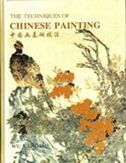The Techniques of Chinese Painting
Publisher:
Morning Glory Press
Publication:
1/1996
Languages:
English
Binding:
Hardcover
ISBN/SKU:
9787505404199
Pages:
187
Sizes:
260 x 190mm
Weight:
0.7950
In Stock (Only 9 copies left)
To be dispatched within 1 business day
To be dispatched within 1 business day
Special Price
£22.74
£22.74
Regular Price
£23.95
(€25.47)
Chinese painting has its origins in the pictographs inscribed on bronze during the Xia, Shang and Zhou dynasties (c. 21st to 3rd centuries BC). Paintings on silk, Possessing linear effects, had appeared during the period of the Warring States (475-221) and by the late Western Han era (206 BC-AD 24), paintings in rich colours were being done, such as the murals discovered in Han tombs. In the history of Chinese painting, figure painting was the first genre to appear. The earliest examples, during the Warring States period, were on silk. (Paper began to be manufactured only in the first century AD.) By the prime Tang (AD 740-70), figure painting was already well advanced. Mountains, rivers, flowers and birds served only as the background or embellishment of a painting: they developed into independent genres at a much later date. In time, however, landscape painting became the most important genre and numerous schools, theories and techniques relating to it evolved. The earliest extant Chinese landscape is Spring Excursion by Zhan Ziqian of the Sui (AD 581 -618), an artist who paid special attention to brushwork and used dots and lines as his principal method of expression. Today, many artists believe that a mastery of landscape painting makes it easier to learn figure and flower-and-bird painting because techniques learnt for the former can be used in the latter.




